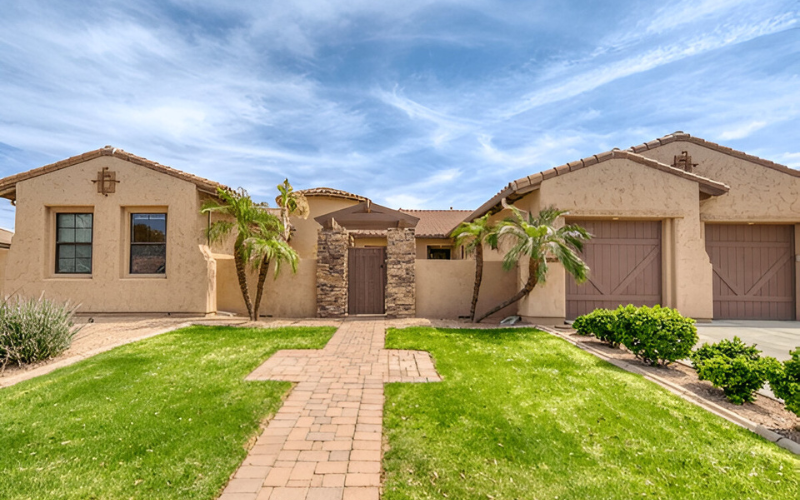Introduction
Hacienda style homes bring a warm, earthy charm that feels both inviting and enduring. Inspired by Spanish colonial architecture, these homes are known for their relaxed atmosphere, natural textures, and open-air living spaces. Whether you’re looking to build, renovate, or simply appreciate the design, understanding the essence of hacienda style homes can help you fall in love with their timeless appeal.
Defining the Hacienda Style Home
Hacienda style homes trace their roots back to early Spanish estates in the American Southwest and Latin America. Originally built for ranchers and landowners, these homes were designed to withstand hot, dry climates while offering shade, comfort, and beauty.
The defining features include thick stucco walls that help keep interiors cool, red clay roof tiles that reflect the sun, and long corridors or verandas to allow airflow. Many of these homes were built in a single-story layout, often wrapping around a central courtyard. Influenced by Spanish, Mexican, and Mediterranean styles, hacienda homes reflect a deep connection with the land and climate.
Today, the term “hacienda style” goes beyond historical architecture. It represents a design philosophy rooted in rustic simplicity, warmth, and connection to nature — values that remain highly desirable in modern living.
Architectural Elements That Make Hacienda Homes Stand Out
What makes a hacienda home visually distinctive is its blend of natural materials and traditional design elements. From the exterior, the homes often feature white or earth-toned stucco walls, contrasting wooden beams, and terracotta roof tiles. These features are not only beautiful but also functional in warmer climates.
Rounded arches are commonly used for windows, doors, and even passageways, adding to the home’s graceful, old-world appearance. These arches, paired with ironwork details, wooden shutters, and exposed rafters, offer a cozy, handcrafted aesthetic.
The Role of Courtyards and Outdoor Living Spaces
Perhaps the most iconic feature of hacienda style homes is the central courtyard. Originally used for cooking, gathering, and staying cool, this open-air space brings natural light into the heart of the home. In modern versions, courtyards serve as tranquil gardens, entertaining areas, or even private pools.
These outdoor spaces connect residents with nature while also creating a seamless indoor-outdoor flow — a quality especially appreciated in sunny regions like California, Texas, and Arizona.
Interior Design Features of Hacienda Style Homes
Step inside a hacienda home and you’ll notice a natural, grounded feel. The interiors continue the use of earthy tones and raw textures. Floors may be made of terracotta tiles or natural stone, while walls remain softly textured or whitewashed to reflect light.
Exposed wooden beams across the ceilings are a key element, lending a rustic charm and a sense of history. Rooms often have a cozy, intimate layout with fireplaces as focal points, built-in niches, and archways between spaces.
Common Materials and Decor Choices
Materials in hacienda interiors reflect simplicity and durability. Clay, wood, iron, and leather are commonly used in everything from flooring to furniture. Wrought iron light fixtures, carved wooden furniture, and pottery accents create a warm, inviting atmosphere.
Color palettes typically include shades of terracotta, olive green, deep blue, and warm beige. These colors mirror the natural surroundings and enhance the home’s relaxed, sun-kissed style.
Why Hacienda Style Homes Remain Popular Today
There’s something universally comforting about the hacienda aesthetic. It offers a blend of tradition, elegance, and everyday livability that continues to resonate in the modern era. Homeowners are drawn to its laid-back atmosphere, handcrafted feel, and natural materials.
Moreover, the open layouts, thick walls, and shaded outdoor areas contribute to energy efficiency and a comfortable indoor climate — something more important than ever in today’s eco-conscious world.
Hacienda homes are not bound by trends. Their timeless design and adaptable layout make them a smart investment, blending historic character with contemporary needs.
Building or Renovating a Home in Hacienda Style
If you’re planning to build or renovate with a hacienda style in mind, it’s essential to understand the balance between tradition and personalization. You don’t need to replicate a historic estate — modern hacienda style homes can be customized with updated floor plans, smart features, and eco-friendly materials while still honoring the essence of the style.
Working with architects or designers familiar with Spanish Colonial or Mediterranean influences can help maintain authenticity while meeting modern building codes.
Regional Variations and Adaptations
Depending on where you live, hacienda style homes can be adapted to fit different climates and lifestyles. In coastal regions, more glass and open-air elements might be included. In colder areas, the roof pitch may be adjusted, or materials may shift to include more insulation while keeping the traditional look.
Conclusion
Hacienda style homes offer more than just good looks — they deliver comfort, charm, and a lifestyle rooted in simplicity and tradition. Whether you’re inspired by their rustic elegance or planning your dream home, the timeless appeal of hacienda style continues to make a lasting impression. With their ability to blend the old and the new, these homes are proof that classic design never goes out of style.
FAQ
Q1: What defines a hacienda style home?
A hacienda style home is characterized by stucco walls, red-tiled roofs, arched doorways, exposed wood beams, and a central courtyard, all inspired by Spanish colonial architecture.
Q2: Are hacienda homes energy efficient?
Yes. Their thick walls, clay tile roofs, and open-air layouts help regulate indoor temperatures, making them well-suited for warm climates and reducing the need for artificial cooling.
Q3: Can modern homes incorporate hacienda elements?
Absolutely. Many modern homes use hacienda design elements like arches, rustic materials, and courtyards while including contemporary floor plans and finishes.
Q4: What materials are typically used in hacienda construction?
Common materials include stucco, terracotta tile, clay, natural stone, wood beams, and wrought iron — all chosen for their beauty and durability.

